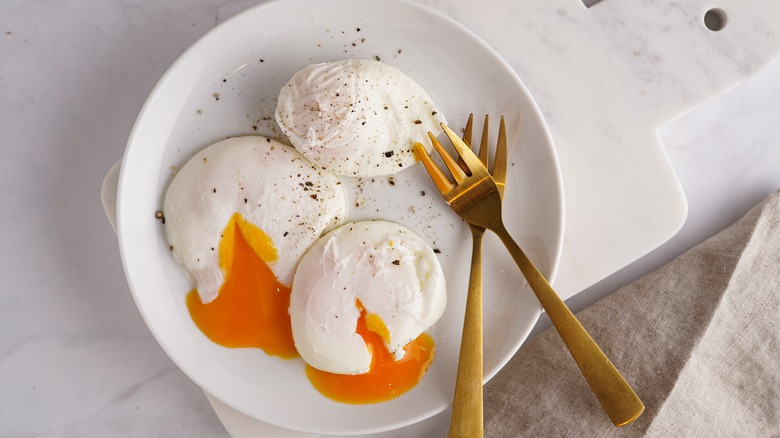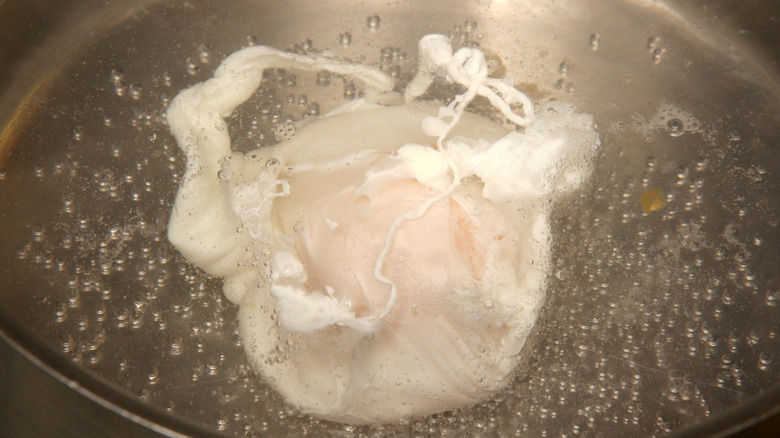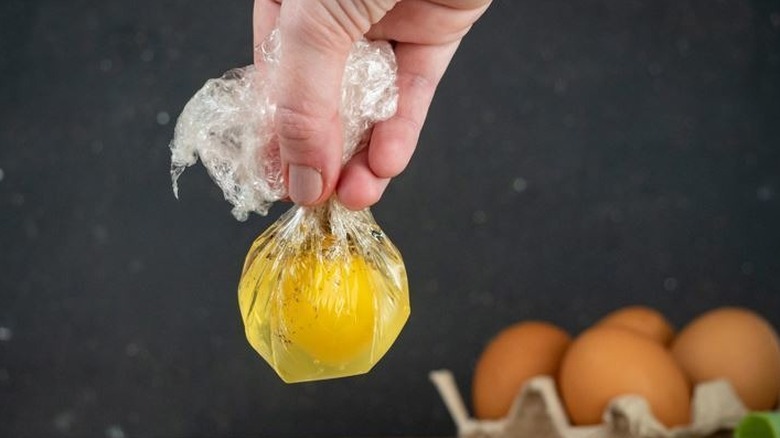The Foolproof Cling Film Method For Perfect Poached Eggs Every Time
A poached egg is one of the ultimate brunch items with its silky white flesh and bright yolk trickling down the side of the muffin. As beautiful as it looks, when it comes to preparing a perfect poached egg, nothing really seems simple about it: You need the best and freshest eggs, the water temperature has to be right, and timing is crucial. The truth is, not many cooking techniques can induce so much fear as the art of poaching an egg. If you don't have the confidence, swirling the delicate egg white around the yolk can get messy very quickly.
Chefs have their own little secrets for poaching eggs, but even they can struggle with it sometimes: an odd egg can make the whole batch look like a failed science experiment. Fortunately, among the many tried-and-true methods for poaching eggs, there's one kitchen hack that can save the day.
What's wrong with the common tips for poaching an egg
You may have seen or tried some of the ways celebrity chefs elevate their poached eggs — they are aplenty. Nigella Lawson describes in detail her fear of poaching eggs and suggests adding lemons to eggs right before poaching, while Alton Brown insists on dropping an egg into the spinning swirl of water in the pan.
While all professional advice seems sound and should, with a little practice, produce the results you hope for, few of them take into account poaching more than a few eggs at a time. (With the exception of Ina Garten and her "Barefoot Contessa" method, of course.) If you try swirling a large batch of eggs (with or without vinegar), you'll quickly see what we mean; things can easily get out of control. So is there a hassle-free way to cut the breakfast prep time? According to chef Jamie Oliver, there is, and we need a simple plastic wrap to test it.
An easy cling film trick for perfect poached eggs
Using disposable plastic in cooking isn't exactly a call for sustainability, but sometimes the results are worth the sacrifice. (It's also worth noting that while the cling film method is generally considered a safe practice by chefs, using it for cooking, in general, seems to be at least slightly controversial among home cooks.) All that aside, when it comes to mastering the poached egg, a few would argue against a method that helps to avoid all the agony.
The next time you're craving eggs Florentine with hollandaise sauce but don't have time to play with the egg whites in the pan, try pouring your eggs into an oiled plastic wrap. This is best done over the small ramekin: place the plastic wrap inside, carefully pop the egg in, and tie a knot to seal it (but make sure there's enough wrap left at all ends). Meanwhile, bring the water to a simmer and put all the eggs in at the same time — in about three minutes – and you'll have perfectly poached eggs ready to be nestled on top of your favorite bun. You'll notice little ridges at the top where you tied your knot, but that's a small pitfall for the time you just saved! Best of all, you can do this with eggs that aren't quite fresh.


